Introduction: An AI Agent refers to an artificial intelligence system that can autonomously execute tasks in specific environments. It not only receives tasks but also independently formulates and executes work plans while continuously self-evaluating and adjusting during the process, similar to how humans think and correct in creative tasks. The four key design patterns of AI Agents are the foundation for efficiently executing complex tasks, together forming the capability framework of AI Agents. This article will delve into these four key design patterns.
The four key design patterns of AI Agents are as follows:
-
Reflection: LLM checks its own work to propose improvement methods.
-
Tool Usage: LLM uses web searches, code execution, or any other functions to help gather information, take action, or process data.
-
Planning: LLM proposes and executes a multi-step plan to achieve goals.
-
Multi-Agent Collaboration: Multiple AI agents work together, allocating tasks and discussing and debating ideas, proposing better solutions than a single agent.
1. Reflection
As shown in Figure 1, the reflection pattern allows the AI Agent to review and evaluate its output after completing tasks. In this mode, the AI Agent can not only execute tasks but also critically reflect on its work like a human expert.
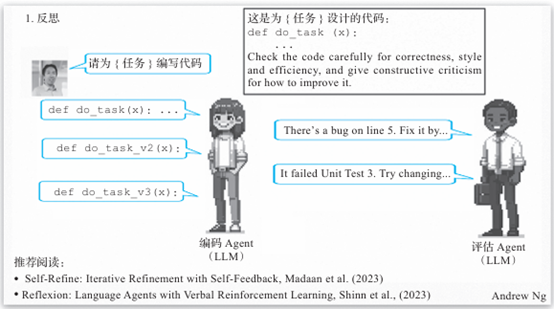
Figure 1 AI Agent’s Four Design Patterns – Reflection
Case:
The AI Agent might generate a piece of code and then self-check the correctness, efficiency, and structure of the code against preset standards or feedback, proposing possible improvements. This capability of self-supervision and correction enables the AI Agent to continuously improve accuracy and efficiency while executing tasks.
2. Tool Usage
Tool usage, as shown in Figure 2, empowers the AI Agent to utilize external tools and resources to expand its capabilities and improve productivity. In this mode, the AI Agent can search the web, generate and execute code, analyze data, etc., utilizing various tools to gather information and perform operations.
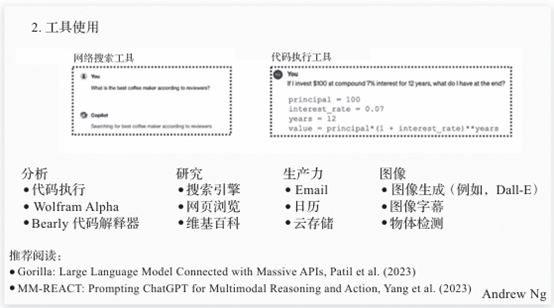
Figure 2 AI Agent’s Four Design Patterns – Tool Usage
Case:
The AI Agent might use image processing tools to analyze and process image data or call APIs to obtain and integrate external information. Such capabilities allow the AI Agent to interact with external systems, adapting better to changing task requirements.
3. Planning
The planning pattern emphasizes the AI Agent’s ability to systematically plan and break down steps when facing complex tasks. As shown in Figure 3, the AI Agent not only understands the overall goal of the task but also formulates a detailed action plan and progresses through the task flow step by step according to the plan. In this mode, the AI Agent can exhibit human-like foresight and strategic thinking. For example, when managing a project, the AI Agent might first identify the main milestones of the project, then develop specific execution steps and timelines for each milestone, ensuring the project proceeds in an orderly manner.
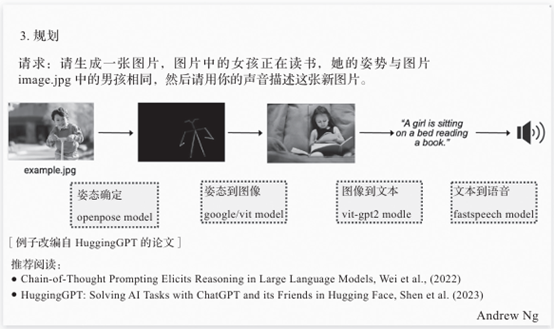
Figure 3 AI Agent’s Four Design Patterns – Planning
Case:
The AI Agent can automatically plan the path to achieve a given goal. For instance, when developing a new project, it can outline a series of steps such as research, design, coding, and testing, and automatically execute this plan, even re-planning to circumvent obstacles when faced with issues.
4. Multi-Agent Collaboration
Agent collaboration highlights the cooperation and coordination among multiple AI Agents. As shown in Figure 4, in this mode, each AI Agent can play a specific role and collaborate with other AI Agents to complete complex tasks. This collaboration can simulate real-world team workflows, enhancing overall execution efficiency and innovative capabilities through the complementary and synergistic effects among agents.
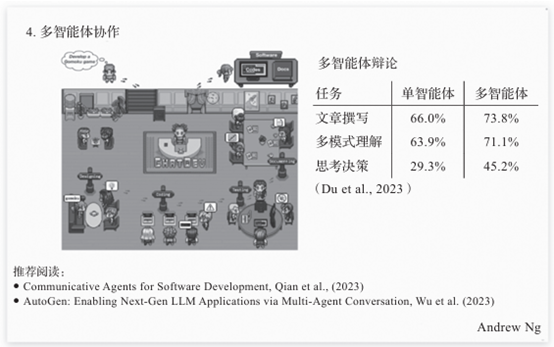
Figure 4 AI Agent’s Four Design Patterns – Multi-Agent Collaboration
Case:
In an open-source software development project, one AI Agent might be responsible for writing code, while another AI Agent handles code review and testing, collaboratively driving the project’s successful completion through such division of labor.
Conclusion
AI Agent intelligent workflows demonstrate tremendous potential for practical applications across various industries. These agents’ applications in programming, research, and multimodal task processing will significantly expand the capabilities of AI in the coming years. Undoubtedly, the combined use of these four design patterns not only enhances the execution capabilities of AI Agents in individual tasks but also provides possibilities for collaboration and innovation in broader application scenarios. As these patterns continue to evolve and improve, AI Agents will play an increasingly crucial role in future workflows, driving various industries towards intelligent transformation.
If you want to learn more about AI Agents, including their technical principles, industrial applications, and commercial value, we recommend reading Professor Wang Jiwei’s new book “Understanding AI Agents: Technology, Applications, and Business”.
Author Bio:
Wang Jiwei, a senior observer, analyst, and evangelist in the AIGC field, has systematically organized and deeply thought about the development and application of AI Agents. Currently focused on the practical applications of AIGC, AI Agents, and hyper-automation across various industries, his works are spread across major content platforms, academic websites, and magazines. Author of “Understanding AI Agents: Technology, Applications, and Business”.
Source:
This article is excerpted from “Understanding AI Agents: Technology, Applications, and Business“, by Wang Jiwei, published by the Machinery Industry Press, authorized for publication by the publisher. Please indicate the source for reproducing.
▼
Further Reading
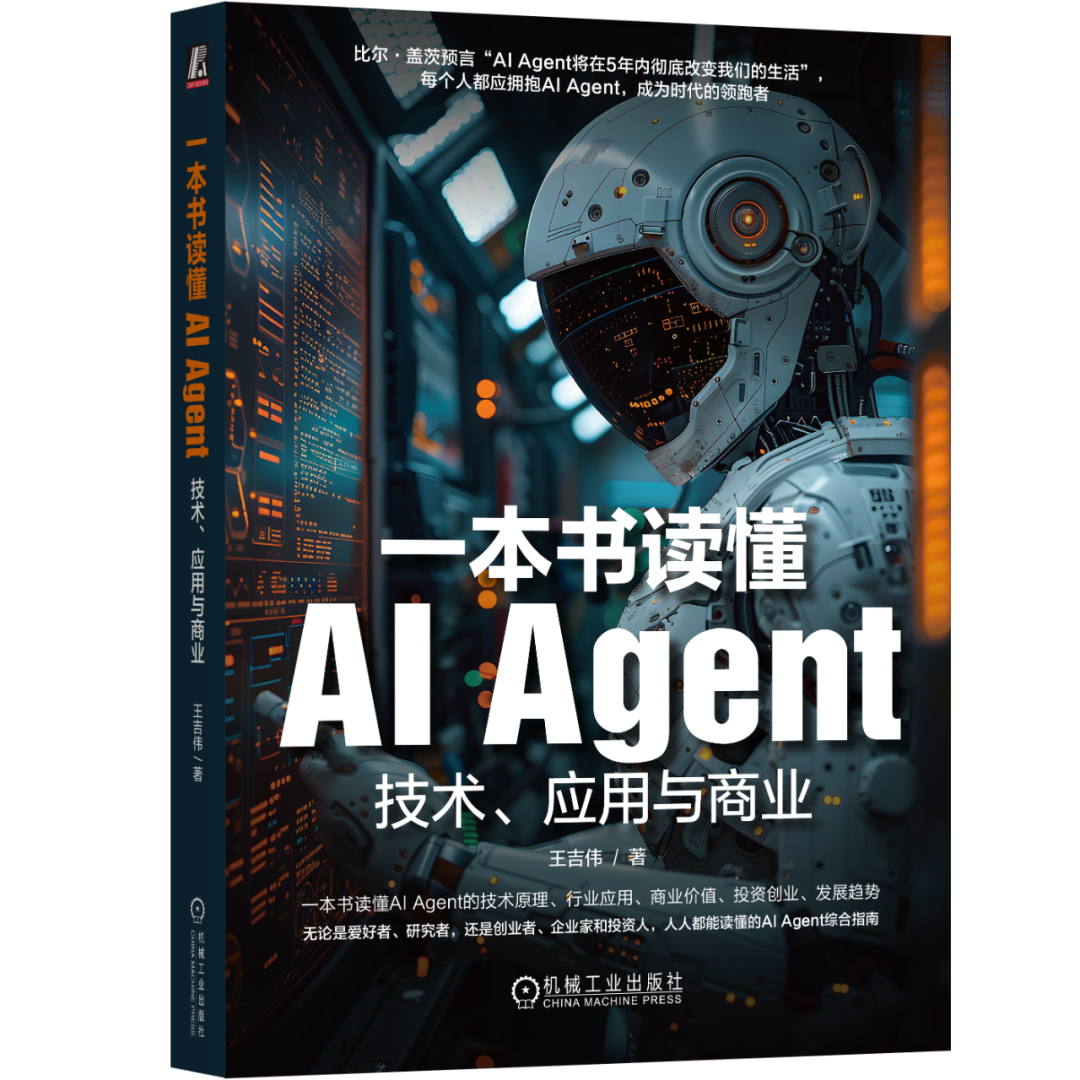
“Understanding AI Agents: Technology, Applications, and Business“
By Wang Jiwei
Comprehensive explanation from five dimensions: technology, applications, business, venture capital, and trends
Whether you are an enthusiast, researcher,
or entrepreneur, business owner, or investor
This comprehensive guide to intelligent agents is accessible to everyone!
Content Introduction:
This is a work explaining AI Agents from five dimensions: technical principles, industry applications, commercial value, investment and entrepreneurship, and development trends, possessing the dual attributes of popular science and business literature.
The book first details the technical pathways of AI Agents and their applications in 11 major fields, with rich application cases helping readers deeply understand the product forms and service methods of AI Agents;then it delves into the commercial value and ecosystem of AI Agents, providing many thoughts and summaries on enterprise-level applications and investment entrepreneurship, inspiring readers in application and entrepreneurship.This book integrates technology, applications, and business concepts, balancing theory and practicality, making it a comprehensive guide suitable for both industry insiders and outsiders to quickly understand AI Agents and enhance industry awareness, receiving unanimous praise from many industry professionals, experts, and entrepreneurs.

Book Giveaway
To thank our readers, scan the QR code below to follow the MLNLP video account, reply with ‘giveaway’ to participate in the lottery, and win 5 great books for free! Draw date: November 20 at 8 PM!

-
Article Source: Original, Image Source: Original
-
Editor: Wang Ying, Department Head: Ning Shan
-
Publisher: Bai Yu